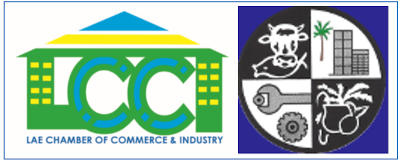Brazil, Russia India, and China—the BRICs countries—provide a great example of four countries with very little natural geographical, cultural or historical ties, which have come together to focus on mutual opportunities and challenges. BRICS expert David Thomas outlines how Papua New Guinea and other Pacific nations could learn from the BRICs.
BRICS 2014The four original BRICS nations are Brazil, Russia, India and China, which have now been joined by South Africa.
Earlier this year, they set up their own BRICS Development Bank, believing the IMF, World Bank and other western influenced institutions are not doing enough to support and invest in developing countries.
Here are some of the things PNG and the region could learn from the BRICs:
1. Choose your friends carefully
PNG policymakers and leaders must think hard about the countries that can and/or will have the most impact on their future and progress, and then work hard to establish a tight knit group of like-minded leaders who meet regularly to make things happen. This can be achieved (as with the BRICS) without upsetting or excluding existing relationships with other countries which are important from a trade or investment perspective.
2. Attract foreign investment
China is the most significant investor in the region, with a well developed “Going Out” strategy to focus on energy and food security.
PNG is very well placed to attract substantial investment from China, particularly in the mining, resources, food and agriculture sectors.
PNG has a chequered history with Chinese investment, with local stories of cultural misunderstandings, poor execution and even corruption, and is perhaps not focusing as much on China as it could.
Regular visits, via sister-city relationships are welcomed in China, as are regular visits by all political leaders, particularly the prime minister.
3. Accelerate urbanisation
Urbanisation is a driving force for economic growth and expansion and can produce an increase of 20% GDP per capita.
‘It is critical for the government to speed up its ‘National Urbanisation Policy 2010-2030′.
It increases rural productivity, boosts demand for resources, commodities and energy and drives domestic consumption (urban residents spend 3.6 times more than rural dwellers).
On PNG’s doorstep, Indonesia is the fastest urbanising country in the world and is witnessing growth in the numbers of middle class consumers. All the BRICS are benefiting from rapid urbanisation, notably China and India.
By contrast, PNG is a rural and agricultural economy with only around 18% of the population currently living in urban centres.
Furthermore, Port Moresby, PNG’s capital, is ranked as the world’s third worst city for liveability by The Economist magazine, with 50% of the estimated population of 700,000 living in poor conditions.
PNG towns and cities are under major stress from unmanaged urbanisation and, unless properly managed, quality of life issues including urban security, customary land development and affordable housing issues will further deteriorate.
4. Stability is the key
Brazil is a good example of how political and fiscal stability can lead to substantial economic growth by comparing two periods in Brazil’s recent history:
From 1980 to 1994, Brazil had:
◾5 presidents
◾15 finance ministers
◾14 CB presidents
◾6 currencies
◾730% average annual inflation
◾Inefficient public sector
◾Closed economy
◾Balance of payment crisis
◾Incipient monetary policy
◾Fiscal mess
From 1995 to 2010 (15 years)
◾2 presidents
◾3 finance ministers
◾5 CB presidents
◾One currency
◾7% average annual inflation
◾Privatisation
◾A more open economy
◾Lower external vulnerability
◾Inflation targeting
◾Improved fiscal policy
My advice to PNG is to become a beacon of political stability among the Pacific Islands, and the region as a whole.
5. The importance of planning
China is an example of a planned economy, which benefits greatly from the existence of a well-developed Five-Year Plan but, more importantly, a long track record for having met and exceeded almost all of the targets, milestones and objectives outlined in each of its 11 Five-Year Plans over the past 60 years.
BRICS BankThe PNG Government’s long term Vision 2050 and shorter term policy documents and white papers, including the 2014 Responsible Sustainable Development Strategy, emphasise the need for a more diverse economy, based upon sustainable industries, improved infrastructure, the development of SMEs and greater collaboration with foreign investors and the private sector.
These grand plans are admirable and necessary but my advice is to gain a reputation for not just having a vision, but for execution, implementation and deliverables.
I don’t think anyone would disagree with that.

